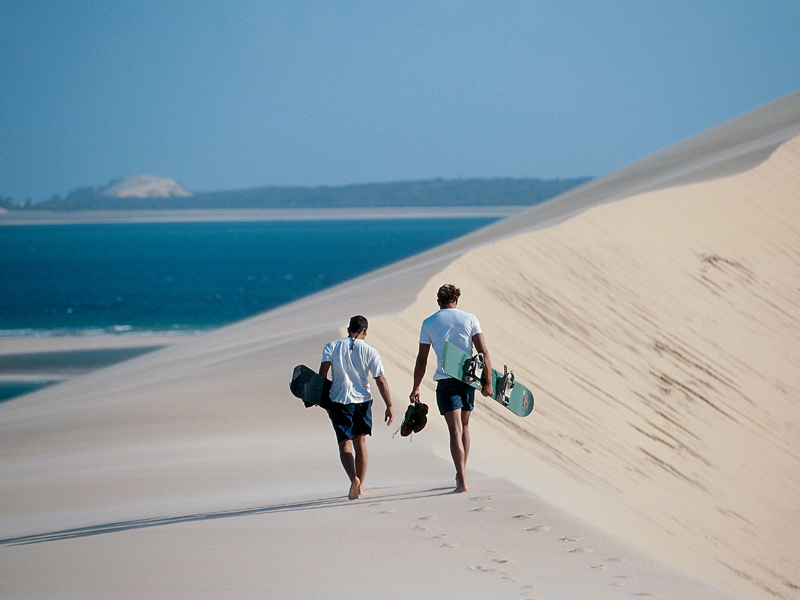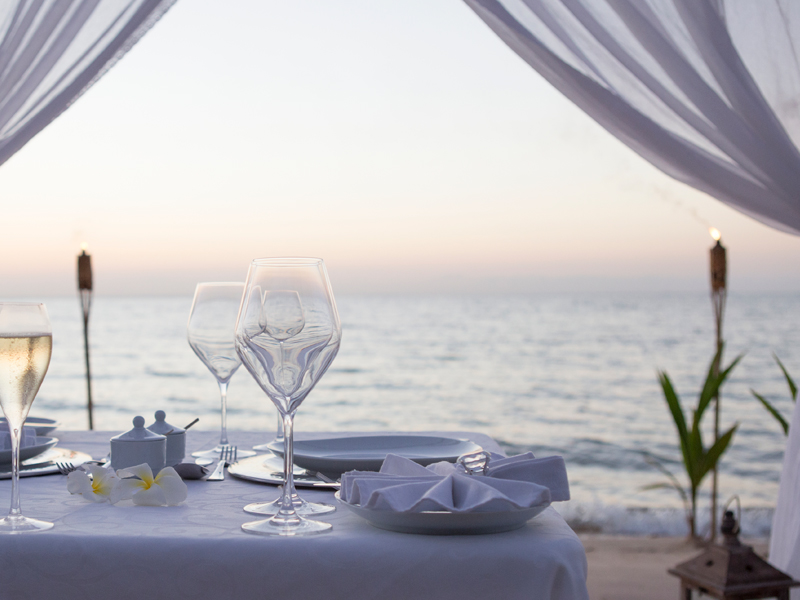About Mozambique
A tropical and mysterious paradise, Mozambique is not frequented often by international travelers but still holds some beautiful secrets that keep bringing seasoned travelers back. Idyllic white sandy beaches along the warm and inviting Indian Ocean make this destination a great place for a beach holiday. Mozambique’s rich marine biodiversity, with a stretch of vibrant coral reefs and islands, provide an aquatic paradise for amateur or experienced snorkel and scuba enthusiast. Mozambique also offers excellent off-shore fishing for those who want to test their angling luck by catching marlin and sailfish; some could even be lucky enough to spot a Whale Shark, the ocean’s biggest fish, in deeper waters. An estimated 2000 spectates of fish thrive off the shores of Mozambique’s 2,500 km coastline, making this destination one of the best kept secrets for avid divers.
Top Destinations in Mozambique
- Bazaruto Archipelago – White sandy beaches, fishing and excellent scuba diving.
- Quirimbas Archipelago – Most of the most biodiverse reefs on earth, a marine sanctuary for dugongs, dolphins, and turtles, and even humpback whales pass through this collection of islands
- Inhassoro and Vilanculos – The gateway to the Archipelagos.
Points of Interest
Bazaruto
This archipelago is made up of four pristine islands: Bazaruto, Benguerra, Santa Isobel, and Santa Carolina. This collection of islands is, for the most part, uninhabited – aside from a few quiet villages. This makes for a perfect place to escape, relax and explore. Bazaruto and Benguerra are the larger of the 4 islands, both boasting stunning white-sandy beaches with excellent scuba diving and snorkeling opportunities. Towering white sand dunes, forests, savannas and wetland make up the interior of these two islands. The archipelago is also ranked at the best marlin fishing destination in the western-Indian Ocean.
Quirimbas Archipelago
Quirimbas, more isolated and remote than Bazuruto, is home to some of the most abundant reefs and marine sanctuaries in the world. Calm and pristine on the surface, this area is thriving with life underwater. Humpback Whales travel through these islands on their annual migration across the oceans, while dugongs, dolphins and turtles are residents to the area. This archipelago is still very much an untouched part of Africa with little development, making guests feel as if they are the first and only ones to explore its pure and untouched beauty. The 5 islands that make up Quirimbas each hold their own unique beauty. Its largest island, Vamizi, is surrounded by unparalleled marine life and over 150 species of coral and is considered to be one of the healthiest coral reef systems on the planet. Inland on Vamizi, you will find a mangrove forest oasis, one of earth’s most threatened habitats.
Inhassoro, Vilanculos, and Pemba Towns
These 2 mainland coastal towns provide a gateway to the archipelagos that lie just off the coast of Mozambique. Inhassoro is set nearest to the Bazaruto Archipelago and is known for being a small fishing village with a historic hotels and stores available for exploring, while Vilanculos (named after Chief Vilankulo) is a popular destination on route to the Archipelagos. Inhassoro and Vilanculos each have beach front lodges of their own within close proximity to the Bazzaruto Archipelago by boat, while Pemba, not to be confused with Pemba Island (Tanzania), gives access to the Quirimbas Archipelago.
Travel information
Before you travel, we recommend that check with you local embassy on any travel alerts to Mozambique. International guests can fly into Vilanculos via Johannesburg, and then to their onward destinations; for visitors travelling to the Quirimbas Archipelago there are flights 5 days a week to Pemba from Johannesburg.
Visa Requirements:
Visa’s are required for most overseas residents but can be acquired upon arrival, please check with your local Mozambique embassy to confirm if you need a visa. USD or GBP Cash are accepted when purchasing visas.
Currency:
Mozambique trades in Meticals (MZM). Most lodges and restaurants will accept US Dollar or GB Pound, but for more remote areas MZM is required
Tipping:
As in most parts of the world, tipping is completely up to a guest’s discretion and whether or not you were satisfied with the service provided.
- Who?
- Back of house staff (usually there is a tip box for this).
- Private Butlers and Chefs (in the more luxury properties).
- Guides for activities.
- When?
- Amount?
- Staff: $3-5 per guest per day.
- Private Butlers/Chef: $8-10 per guest per day.
- Guides: $8-10 per guest per day per activity.
Seasonal Information
Mozambique’s seasons are similar to neighboring countries, and it is best to visit in the dry season when the weather is ideal for a tropical holiday: clear skies, no rain, and little humidity.
December – April:
This period is known as Mozambique’s “wet season”, even though the sun comes out to shine after a vigorous downpour is experienced. Tourism is low during this time period because of the rains, allowing those travellers who want a more affordable experience to travel. It’s not recommended to travel here during the months of January and February, as this is when Cyclone season occurs.
May – November:
Although Mozambique experiences their winter during this period, it is also known as their “dry season” as there is little-to-no rain. Even in its coldest months of June, July and August, the temperatures still reach over 30 degrees during the day, allowing you to enjoy a comfortable day adventuring on the gorgeous beaches.
Mozambique's Wildlife
Due to recent conflict in the country, Mozambique is not a safari wildlife destination. But the marine life off-shore is simply remarkable.
- Whale Sharks (October – February)
- Humpback Whales (June – October)
- Dugong
- Bottlenose, Spinner, Striped, & Humpback Dolphins
- Turtles and Manta Rays
- Over 2,000 species of fish



